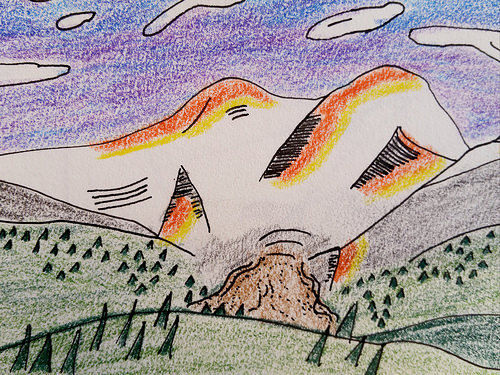
Nanga Parbat. (All rights reserved)
Reading anything by Reinhold Messner translated from the original German can be arduous, at least for me. His poetic language, I’ve been told, works best in German so it sounds awkward in English. Of course, we read his books because of who he is not because of his mastery in prose. While his book like the Crystal Horizon are benchmarks in literature about the sport, his 2003 book The Naked Mountain, is part of the controversy that surrounds the legend of Reinhold Messner.
I read The Naked Mountain several years ago when it was released in the United States. It’s about his climb up Nanga Parbat (26,660 ft./8126 m.) in 1970 with his brother Gunther. In short — as I have had it explained to me by a couple of sources — they climbed the Rupal Face (shown above) despite expedition leader Karl Herrligkoffer intent for Reinhold to summit alone. Reinhold and Gunther topped out without a rope and bivied near the summit in bad weather. Exhausted and unable to get help, they decide to descend via the Diamir Face on the other side from which they came. They become separated and Reinhold lost track of his brother, and later he suspected Gunther was lost in an avalanche. Reinhold wanders back to base camp weak from the climb and an emotional wreck.
Reinhold was accused by the other members of the climbing team, including Herrligkoffer, of abandoning his brother just to traverse Nanga Parbat for the bragging rights. Messner responded with defamation lawsuits. Since then the controversy hasn’t gone away. Messner reopened the wound with publication of this book.
From afar, it’s odd that Messner was entangled in such controversy, though it probably had more to do with strong personalities and ego than the facts. He broke several myths about mountaineering, especially about high altitude climbing in the Himalaya. He climbed light and fast and without supplemental oxygen when many speculated that there might not be enough air up high to sustain a climber. His overall respect by the public and climbers not on the 1970 expedition cannot be denied; he was even elected to European parliament for the Italian Green Party a period.
According to the 2004 American Alpine Journal (see page 448), two other books also published in German were released to counter what was said in The Naked Mountain. However, the printing of English translations of Between Light and Shadows by Hans Saler and The Traverse by Max Von Kienlin were prevented by court order. Both argued that Reinhold was only seeking self-glory and sacrificed his own brother to have it. It probably did not help Von Kienlin that his wife Ursula left him and briefly married Reinhold Messner in the 1970s.
In 2005, Gunther’s body was discovered on the Diamir Face, disproving Von Kienlin’s and Saler’s argument that Reinhold abandoned his brother short of the summit to die just so he could go up one side and come down the other. The egos in Von Kienlin and Saler appear to still be there, saying that it could not be Messner’s brother. I for one believe Reinhold Messner and hope he and his brother find peace.
Well, thanks again for visiting. If you enjoyed this post, you can following the Suburban Mountaineer on Facebook or on Twitter.